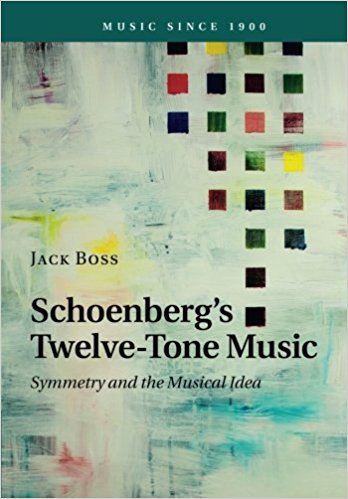
Schoenberg's Twelve-Tone Music:
Symmetry and the Musical Idea
勋伯格的十二音音乐:对称性与音乐思想

著 者: Jack Boss
出版社: Cambridge University Press
出版时间:2014
ISBN号:978-1-107-04686-3
页 数: 437页
索书号:J605.521/B868
所在库室:锦江校区教参阅览室
内容简介:
Jack Boss takes a unique approach to analyzing Arnold Schoenberg's twelve-tone music, adapting the composer's notion of a 'musical idea' - problem, elaboration, solution - as a framework and focusing on the large-scale coherence of the whole piece. The book begins by defining 'musical idea' as a large, overarching process involving conflict between musical elements or situations, elaboration of that conflict, and resolution, and examines how such conflicts often involve symmetrical pitch and interval shapes that are obscured in some way. Containing close analytical readings of a large number of Schoenberg's key twelve-tone works, including Moses und Aron, the Suite for Piano Op. 25, the Fourth Quartet, and the String Trio, the study provides the reader with a clearer understanding of this still-controversial, challenging, but vitally important modernist composer.
作者简介:
Jack Boss is Associate Professor of Music at the University of Oregon. His research interests centre around large-scale coherence in Schoenberg's music, and he has published numerous articles relating to that topic in journals such as Journal of Music Theory, Music Theory Spectrum, Perspectives of New Music and Music Theory Online. He has co-edited two collections of music-analytic essays: Musical Currents from the Left and Analyzing the Music of Living Composers (and Others).
目录:
1. Musical idea and symmetrical ideal;
2. Suite for Piano, Op. 25: varieties of idea in Schoenberg's earliest twelve-tone music;
3. Woodwind Quintet, Op. 26: the twelve-tone idea reanimates a large musical form;
4. Three Satires, Op. 28, No.3:the earliest example of the 'symmetrical ideal' in a (more or less) completely combinatorial context;
5. Piano Piece, Op. 33a: the 'symmetrical ideal' conflicts with and is reconciled to row order;
6. Fourth String Quartet, Op. 37, mvt. I: two motives give rise to contrasting row forms, meters, textures and tonalities (and are reconciled) within a large sonata form;
7. Moses und Aron: an incomplete musical idea represents an unresolved conflict between communicating with God using word or image;
8. String Trio, Op. 45: a musical idea (and a near-death experience) is expressed as a conflict between alternative row forms.
Bibliography
Index